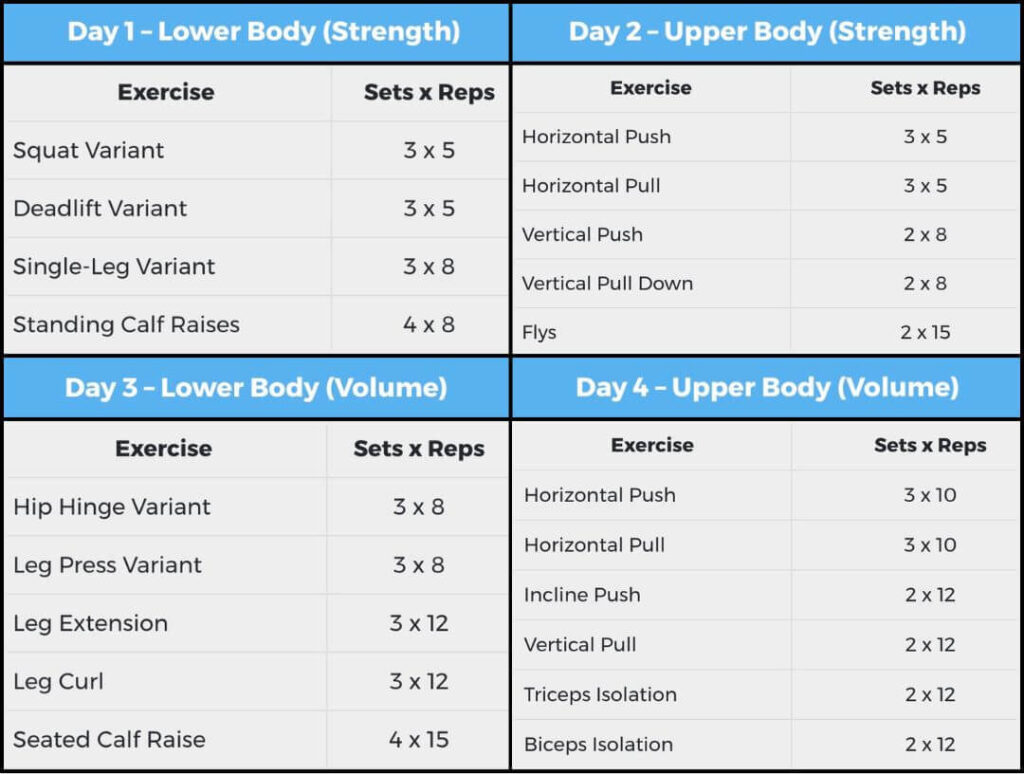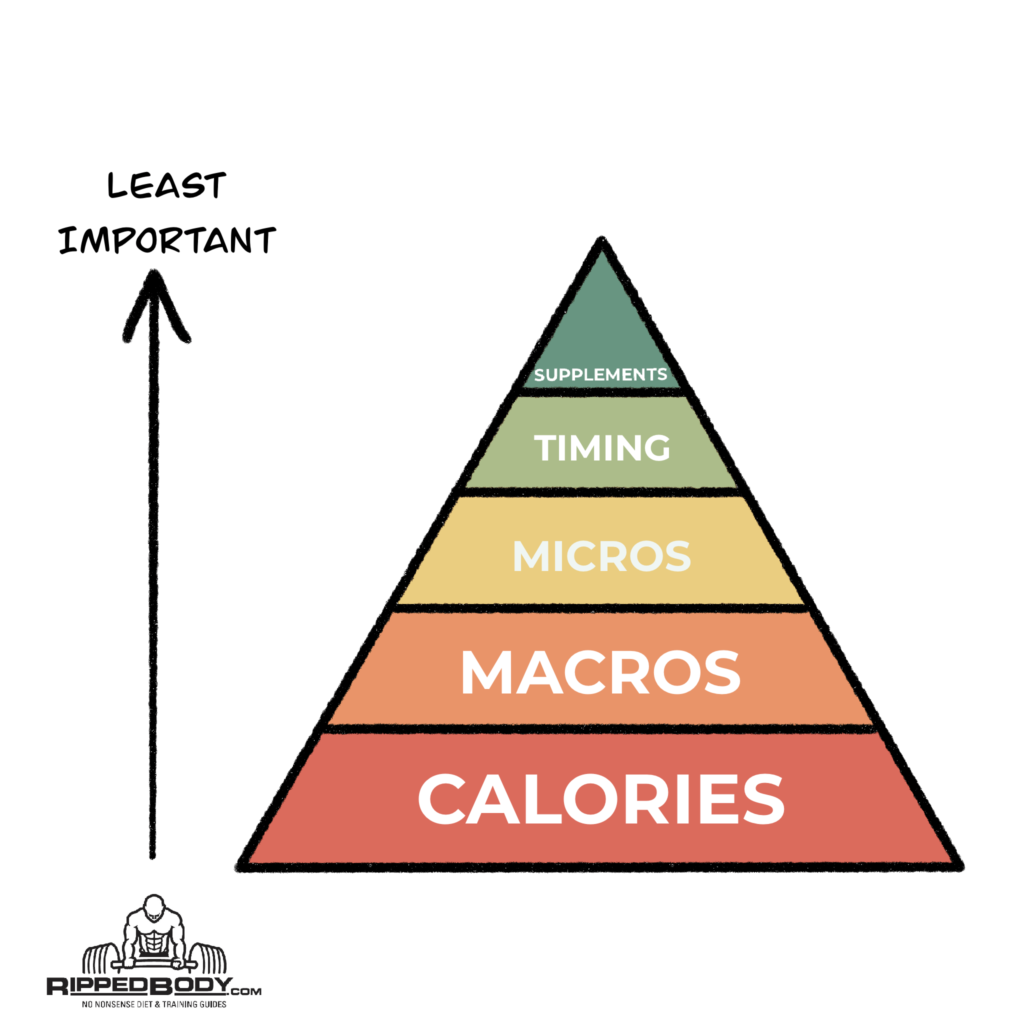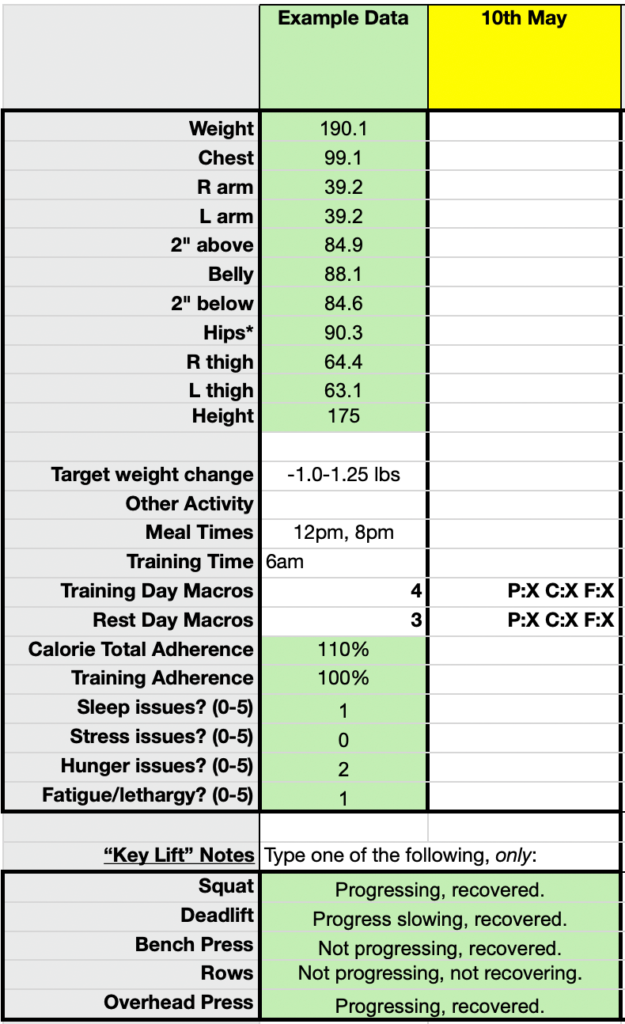THE RIPPED BODY® METHOD
“So, what is your… thing?”
When people hear we do online coaching, that we get good results, and we have a helpful website, this is the inevitable next question.
They want to know what our gimmick is. What corner of the fitness industry wars Ripped Body is camped. Where we are tribally aligned.
Is it keto? Carnivore? Fasting? Vegan? HIIT? CrossFit?
This is understandable. But it’s none of the above.
Our “thing” is to help busy working men achieve their physique goals by getting them to eat and train right. This means helping them find the best nutrition and training strategy for their circumstances, while balancing their work and family commitments.
You are not a bride looking to squeeze into a wedding dress for a day; you are seeking a permanent physical transformation.
Whatever you do, you have to enjoy and be able to sustain it.
There are no dogmatic rules, but there are principles our clients follow, which I’ll cover in a moment.
But before I do, allow me to explain why my industry is such a mess of infighting and misinformation in the first place.
Why The Fitness Industry Is Such A Mess
- People want to believe in shortcuts and are drawn toward simple answers.
- Increasingly, we are being passively educated on topics of our interest through social media or podcasts. These algorithms reward controversial opinions.
- Scientific literacy is low, and people’s attention spans are short. Few are able to evaluate and contextualize new evidence. Those who are, speak with too much nuance to capture attention.
The result is that the loudest voices in the fitness industry are usually full of shit.
👉 Some are sociopathic charlatans.
👉 Most are well-intentioned people stuck in an information bubble and drunk on attention. Their income depends on not waking from their delusion, so their cognitive biases keep them there.
The average person is drowning in conflicting information and no longer knows who to trust. They end up overcomplicating things or getting trapped in a restrictive diet or training paradigm that they can’t sustain.
So How Do We Know Who To Trust?
Look at how people make their money. 💵
Charlatans sell solutions to made-up problems. The classic is to sell supplements, but it can be all manner of other things: genetic tests, green drinks, gut health fixes, programming to cure fake dysfunctions, organic food elitism… the list goes on.
It may not be immediately obvious because the “best” marketers will get you to trust them first. But once you start looking, you’ll see it everywhere.
My best advice is to look for those who coach people directly, are responsible for their results, and have a long and proven track record.
How To Implement The Ripped Body Method
The Ripped Body Principles
- Use progress data to drive decisions. This stops our emotions from fucking us up.
- Don’t mess with things that are working. Novelty can mask your ability to assess what is working and what needs to be changed.
- Plan to do only what you can sustain. Consistency over the long term is what leads to results.
- Avoid the “all-or-nothing” mentality. Life needs to be lived. You won’t be perfect all of the time, so don’t beat yourself up when you aren’t, and don’t let this spiral into more bad decisions. We are a product of our habits, not the occasions.
- Keep things simple. Simple = sustainable = transformational.
- There are no shortcuts or biohacks. The quickest path to your goal is to do things right in the first place.
- Train hard but intelligently. Any idiot can train themselves into the ground. But more is not better, and cranky joints can take a long time to recover once provoked.
- Don’t do shit that hurts. Exercises are tools to get a job done. Choose ones where you can train hard and confidently, thus minimizing injury risk. If you love barbell bench pressing, but your shoulders hate it, choose something else!
- Be an adult. Act like one. Accept that not all things you should do are things you would like to do. Nobody likes training their legs; everyone prefers pizza to vegetables.
What You Need to Do
All of the client transformations share the following nine things in common. If those are the results you are after, have a read and see if you can do something like it.
1. Consistently train 3-5 days per week
Here’s an example of a common physique-focused program that clients do. Note how you can choose from a few exercise options.
(There’s no need to save this. I’ll link you to an article on how to choose a program at the end of this page.)

2. Eat 2-3 meals per day
You can eat more frequently if you wish, but remember, simplicity is your friend.
Here’s a common setup with clients during a fat loss phase:
| 05:30 25 g whey shake |
| 06:00 Training |
| 08:30 25 g whey |
| 11:30 Lunch |
| 19:00 Dinner |
3. Stay within a calorie budget and hit a minimum protein target
You can target the specific macronutrients if you wish (and many clients do), but calorie balance and protein intake are the two most important aspects.

4. Eat Like An Adult, Most Of The Time
👉 Calorie balance determines whether we gain or lose weight.
👉 Our strength training and macros help determine how much of that change is muscle or fat.
👉 Our food choices determine whether we can follow through consistently on that. (Not to mention the health considerations.)
You won’t be able to stick to a diet of pop tarts, and protein shakes for long. So, be prepared to include a range of fruits and vegetables, whole grains, protein-rich foods like meat, fish, eggs, dairy, beans, and healthy fats. Hunger is the enemy of the dieter. This will help keep that at bay.
5. TRACK YOUR PROGRESS
You need data on which to base your decisions. This means body weight, measurements, and a few other things. Here’s how a client progress tracker looks.

6. Use our decision trees and checklists to determine if you need to make changes
We have ones for troubleshooting fat loss, muscle gain, and training plateaus. You don’t need to read these yet; please focus on the setup guides, which I’ll introduce in the next section.
7. Be Prepared To Do A Little Reading
I have made this as simple as possible for you, but there’s a little theory you’ll need to understand to make the right decisions from those checklists. If you get our kickstart bundle (linked below), I’ll deliver you the right stuff at the right time, so you’re not overwhelmed.
8. Manage your Food environment
This means ensuring you have the food you need in the fridge, fruit is easy to access, and junk is out of sight. Here’s our guide to managing your food environment.
9. Walk 7500 steps per day
This is optional, but it can be helpful. Here’s our guide on how and why to set a daily step count.
Alright, do you think you can do these things? Good. Here’s what you need to do next.
How To Get Started
- 🏋️♀️ Choose a training program and modify the exercises based on your equipment availability and preferences.
- 📈 Start tracking your progress like this. (You’ll see a link in the guide to download our latest client tracking sheet.)
- 🤔 Decide an appropriate goal. If you’re overweight, cut. If you’re skinny, bulk. If you’re somewhere in between and unsure which is appropriate, read the article.
- 📖 Get our Transformation Kickstart Bundle: nutrition setup guidance, training programs, and 15-day email course guiding you through the most common mistakes people make. 👇
Three Ways We Can Help
- Our books package everything on the site into a more organized format and go deeper.
- Ask us a question at any time in the comment sections of the articles. We answer daily and have been doing so since 2011.
- You can hire us for coaching. A small percentage of readers do.
Thank you for reading! 💪
Privacy policy.